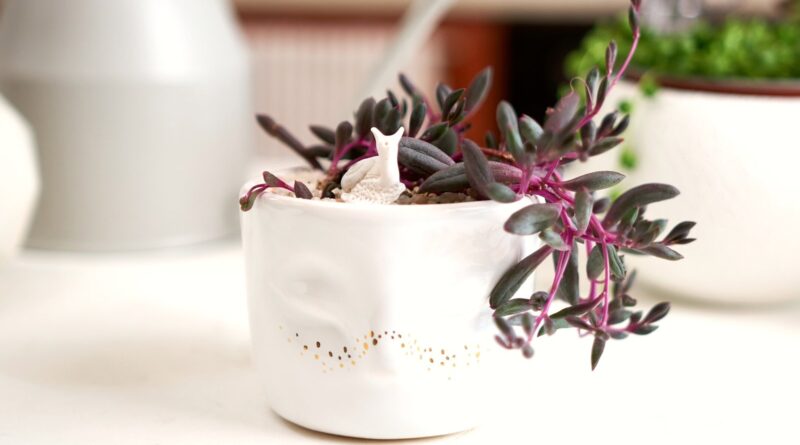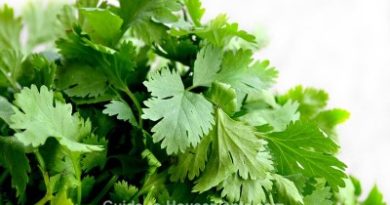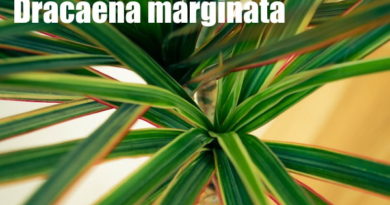How to Plant, Grow, and Care For String of Rubies
When it comes to trailing succulents, string plants are among the most popular choices. Their ease of care and attractive growth habits make these plants great for hanging baskets in the home or outdoors.
String of Rubies is a special species of string plant with some striking characteristics. Let’s get to know this interesting plant.
Overview

|
|
|
What is a String of Rubies?
String of Rubies is a species of succulent with a fun and fascinating character trait. When exposed to bright light, this plant’s foliage morphs into a deep ruby red. The unique, scarlet, bean-shaped foliage also garners plant nicknames such as Ruby Necklace and String of Pickles.
In nature, it is a low-growing succulent plant with a trailing or spreading habit. Meanwhile, in cultivation, this plant is most commonly grown as a hanging plant because of how attractive the trailing stems with plump, fleshy leaves look when grown this way. It can, however, be grown as a ground cover, but only in tropical climates.
History

String of Rubies was originally named in 1865 by Irish botanist William Henry Harvey. In 1901, American horticulturist L.H. Bailey published the Cyclopedia of American Horticulture, in which he described the plant as Othonna capensis. Later, the genus was renamed Crassothonna, making the current name of the plant Crassothonna capensis.
Native Area

Native to the Cape Province of South Africa, String of Rubies can be found in sub-tropical areas. The plant originates in the southern Drakensberg region, where it commonly grows on rocky flats. It has naturalized in Tunisia and Algeria. It is a popular flowering houseplant and garden specimen in Australia, where it is commonly named Ruby Necklace plant.
Characteristics

String of Rubies is a member of the Asteraceae family, as is evident upon examination of its flowers. The yellow flowers are small and daisy-like. When the plant is hanging, the flower stems curve upward, holding the blooms suspended away from the foliage. When grown in the ground, as is the natural growth habit of the plant, the flower stems grow above the foliage, holding the flowers about two inches above the rest of the plant.
Although it is a member of a different genus, it is related to and has many characteristics in common with the other string plants that fall under the Senecio genus. The stems of the plant are thin and delicate with a trailing habit, and the succulent leaves are shaped like small beans. The stems of the plant are red, and in their natural state, the leaves are bright green.
What sets this plant apart from the other strong plants is its color, or rather, its color-changing habit. When stressed by cold temperatures or sunlight, the foliage on this plant changes to a deep ruby-red color.
If the plant gets enough light and proper care, it can bloom nearly year-round. Small yellow flowers emerge from ruby-colored buds, potentially from spring through fall. The foliage is evergreen and very cold-tolerant. Its natural growth habit is creeping, and it is typically a ground-growing plant.
Uses

String of Rubies is grown as an ornamental and has no common practical uses. In zones where it’s considered hardy (5-10), you can grow it outdoors where it makes a nice addition to the rock garden and can also be grown as a ground cover.
It works well in xeriscaping, terrariums, and hanging baskets, as well. In colder climates, it makes a wonderful houseplant, provided that it gets enough sunlight.
Where to Buy
String of Rubies plants have been considered pretty rare until fairly recently. These plants can be reliably purchased from online retailers, but I’ve seen them in one of the nearby nurseries from time to time.
They are usually sold as houseplants, so look in places where unusual houseplants are sold, and you just might find one.
Planting

Because of its growth habits, most String of Rubies are kept in cultivation as houseplants or outdoor potted plants. A mature plant can be potted or planted in the ground in well-drained soil. These plants do not need to be planted deeply, and in fact, cuttings are best left sitting on top of the soil.
Start by choosing a container that has very good drainage. Succulent plants tend to rot when they stay wet, so it is important to keep the soil drained and not overwater. Then select a sunny spot, either indoors or out, as this plant prefers more sunlight than most.
How to Grow
This succulent is easy to grow, and it grows quickly. Once you know how to care for this plant, it will really take off and impress you with its growth and attractive foliage.
Light

While many succulent plants prefer indirect light or bright shade, this one is more of a sun lover. It is with an abundance of sun exposure that the foliage takes on the rich reddish-purple tone that it is known for.
Find a spot in a sunny window, making sure that your plant gets a minimum of six hours of direct sunlight per day. If you are growing it outdoors, look for a spot that gets plenty of sun early in the day. The afternoon sun can be hotter and more intense, so consider finding a space that has morning sun and some protection in the afternoon.
Water

I have found this plant to be somewhat tricky when it comes to watering. As a succulent, it tends to be susceptible to root rot if overwatered. However, it seems to appreciate more water than most other succulents in my container garden, so my advice here may seem in contradiction with what you will find from other sources.
Let the soil dry out between waterings, but don’t let it sit dry for long. As soon as the soil is dry an inch down, make sure to give this plant a good soaking. When you do water, water it thoroughly. Those little bean-shaped leaves hold a lot of moisture, and when this plant gets dehydrated, they tend to shrivel and dry out.
Soil

String of Rubies plants need very good drainage. Their roots are sensitive to moisture, and if the soil stays damp, you run the risk of root rot. This plant also prefers slightly acidic soil, with a pH in the range of 6.0-6.5. You can’t go wrong with a commercial cactus and succulent potting mix.
If you prefer to mix your potting soil on your own, you can start with a standard potting mix and then add materials that will improve the drainage, as standard potting soils will hold more moisture than this plant needs. Mixing in a healthy dose of perlite, coarse sand, or pumice will help increase the drainage of your mixture.
Temperature and Humidity

The ideal temperature range for this plant is 50°-80°F (10°-27°C). If your plant gets left outdoors when the temperature drops below 50°F, it will begin to suffer cold damage. I bring mine indoors as soon as there is a risk of nighttime temperatures falling into the 40s (~4°C).
It prefers a higher humidity level than most succulents. This plant will be happiest when the humidity level is between 40-50%, which is about average for inside the home. If your plump leaves are looking shriveled and you’re watering properly, it could be due to low humidity. This is one succulent that won’t mind the occasional misting.
Fertilizing

Like most succulents, only sparing fertilization is required for this plant. If you want to encourage and support new growth, it’s fine to fertilize once or twice a year, in spring and summer. Choose a fertilizer with a lower nitrogen formula; a ratio of 0.5-1-1 is ideal, and a slow-release formula will help to prevent over-feeding.
Maintenance

You don’t have to prune this houseplant. However, you may find that as the stems grow longer, they get woody and look a little scraggly as they spill over the edge of the container. The best remedy for this is to propagate some new stems. You can cut portions off of the plant and simply add them to the top of the plant or propagate in another container.
Trimming your plant will promote branching, which can be good and bad. It will make for a fuller plant at the bottom, but that can exacerbate the issue with density at the crown of the plant. Repotting is needed infrequently, as the roots are delicate, and this plant doesn’t mind being root-bound. When you do repot, which should only happen every two to three years, choose a pot that is only slightly larger and make sure it has proper drainage holes.
Growing in Containers

Because it cannot grow outdoors outside of zones 10-11, this plant is most commonly kept in a container. When choosing a container, look for one that has ample drainage holes in the bottom. Terracotta pots work great for succulents, as they wick moisture and help prevent overly wet soil. Any pot with good drainage should work, though.
Use soil that drains well, as we discussed earlier in the soil section. Cactus potting mix is a ready-to-use option that can be purchased at most places where plants are sold. Make sure to choose a container that is not much larger than the nursery pot. Keeping this plant slightly root-bound is ideal.
Propagation

Sting of Rubies is an easy plant to propagate and a fun one to share with friends. Even though it is a succulent, I have had success propagating this plant in water. However, soil propagation is also effective and might save you from dealing with root rot.
Whichever method you choose, begin by cutting sections of the parent plant that have at least three or four leaves, preferably more, as these help to support root growth. Gently remove a few leaves from the cut end so that you have several nodes to work with.
If you’re propagating in water, simply place the cut ends down in water and set it in a sunny window. Roots should begin to form within two weeks. These plants root quickly, which adds to their ease of propagation. Once your cuttings have a few inches of root attached, transfer them to the soil and keep them moist for a few weeks to help the roots adapt to the soil.
If you decide to go the soil propagation route, fill a shallow container with your cactus soil mix or home mixture. All you need to do to root your cuttings in the soil is lay them on top of the soil and mist them occasionally with water. Keep the soil moist, but not wet, until the cuttings have roots.
Common Problems
This plant is not especially susceptible to many pests and diseases, but there are a few things to keep an eye out for. Good plant hygiene is the best defense, and new plants should always be inspected before introducing them to your other houseplants.
Pests

The most common household pests to watch for are scale and mealybugs. The good news is that both of these insects are easy to see and identify. Mealybugs are white and have a fuzzy appearance, and scale insects are rounded and have a hard outer shell. They are usually amber or brown.
Both of these insects can be treated by taking a cotton swap soaked in alcohol and wiping them away. Make sure to remove all affected and damaged foliage to give the plant a chance to recover and conserve energy. If treating with alcohol doesn’t eradicate the infestation, neem oil is a good alternative to traditional insecticides.
Diseases

Fungal diseases and mold are the most common disease-related issues. Root rot can be a problem for this plant if it is planted incorrectly. A container with insufficient drainage or soil that retains too much moisture can lead to root rot. Other fungal or mold issues can result from excess moisture in the soil or air and poor air circulation.
Lack of Flowers

Sting of Rubies can bloom for a significant portion of the year under the right conditions. The most likely reason for a lack of flowers is a lack of sun exposure. This plant likes more sun than the average succulent.
If you haven’t seen flowers on a mature plant for a full year, it probably needs more light. I find that a few weeks outdoors in part sun kicks my String of Rubies into blooming gear.
Leggy Growth

Growth that is woody at the top with few leaves is common to this plant. This characteristic can leave a plant looking unhealthy. Although it doesn’t necessarily mean that the plant is unhealthy, the appearance can be less than desirable. You can help your plant to fill in at the top by pulling individual stems back and using hairpins to tack them in place. These stems will behave like cuttings, rooting at the soil.
Another potential reason for leggy growth is a lack of sunlight. If your stems are looking stretched out with increasingly long spans between the leaves, move your plant to a spot where it gets more light.
Frequently Asked Questions
No, all parts of the plant are completely safe for pets and people. It is safe to have within the reach of animals.
It used to be but recently has seen a rise in popularity, so it can be found in many places where exotic houseplants are sold.
Yes. The leaves tend to be a bit fragile and break off easily. It’s best to handle your plant as infrequently as possible.
Final Thoughts
This quirky and beautiful succulent makes an excellent addition to the succulent garden or houseplant collection. Its enchanting color-changing habit makes it an eye-catching conversation starter, and you and your fellow plant lovers will love how shareable it is!




